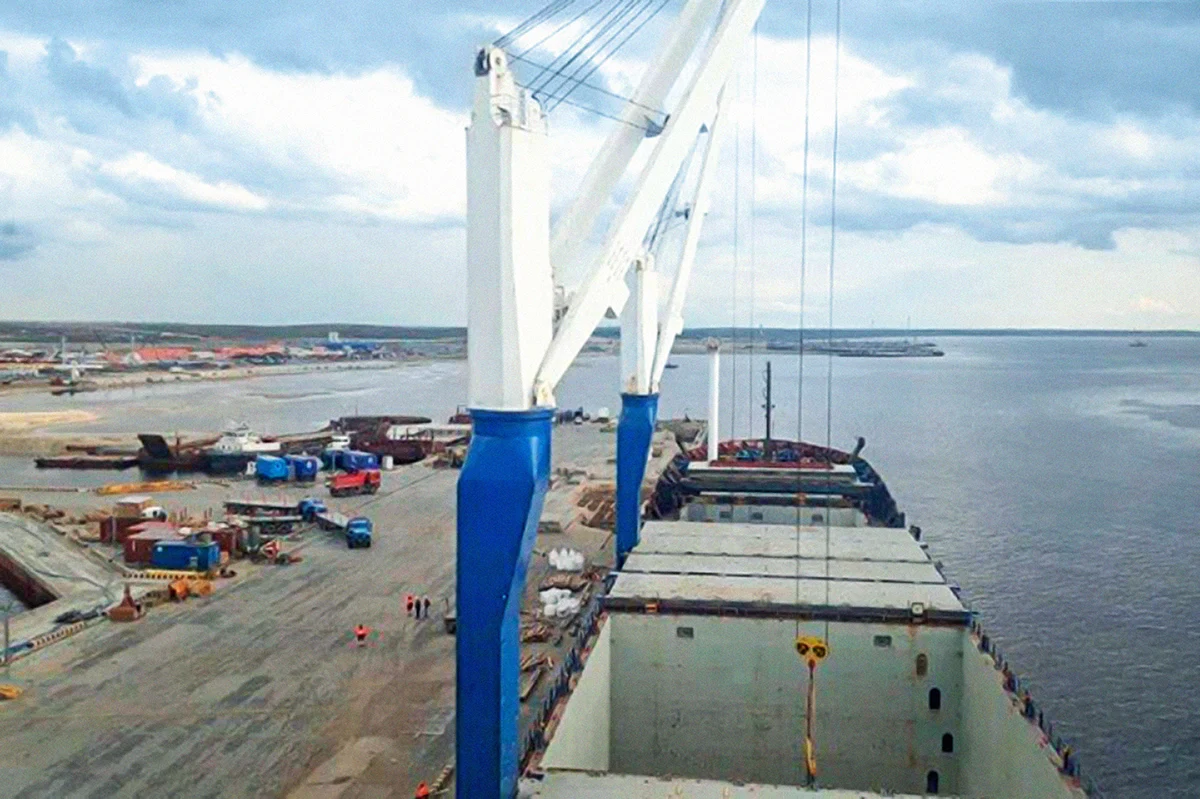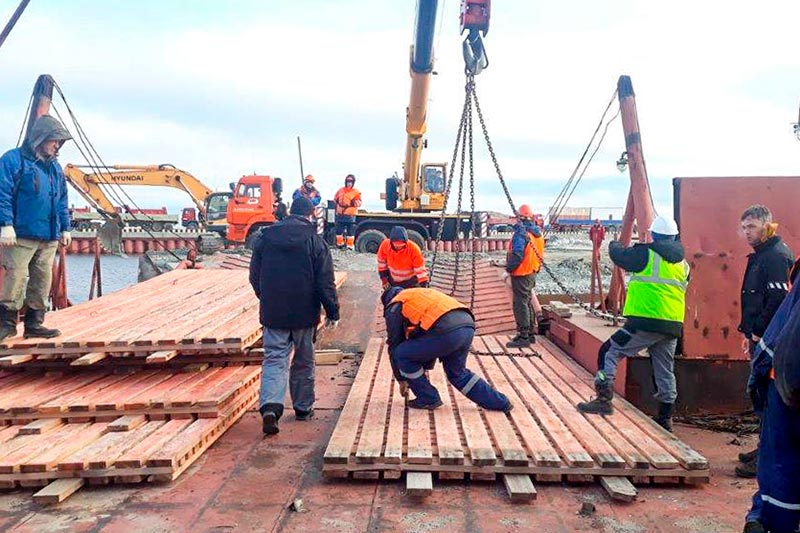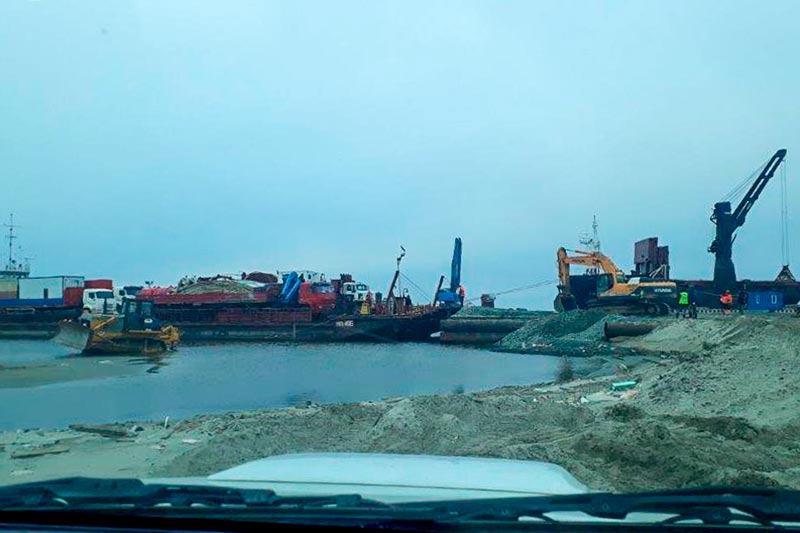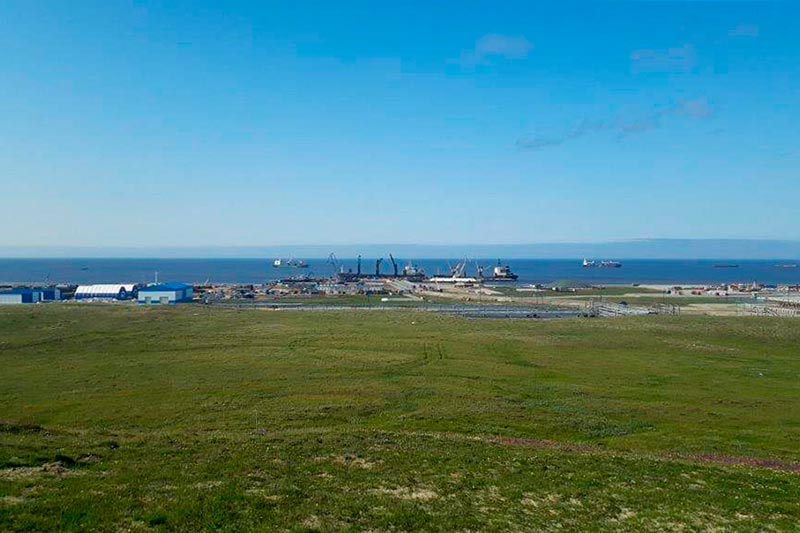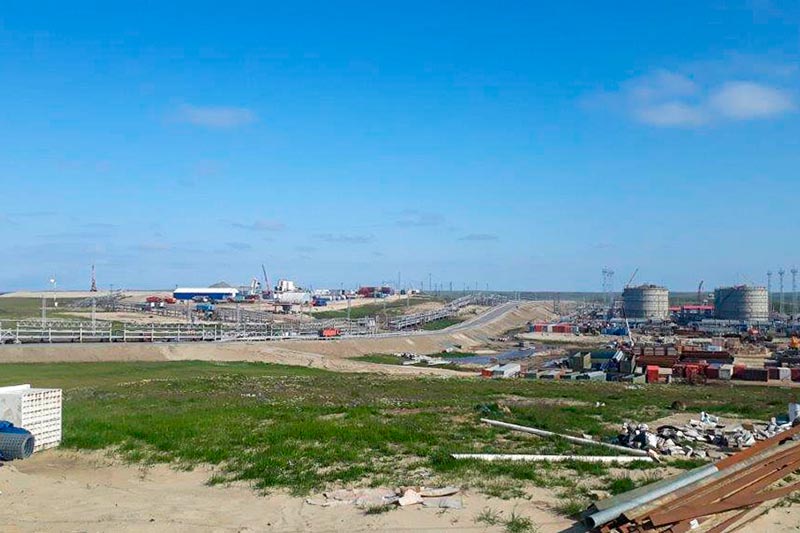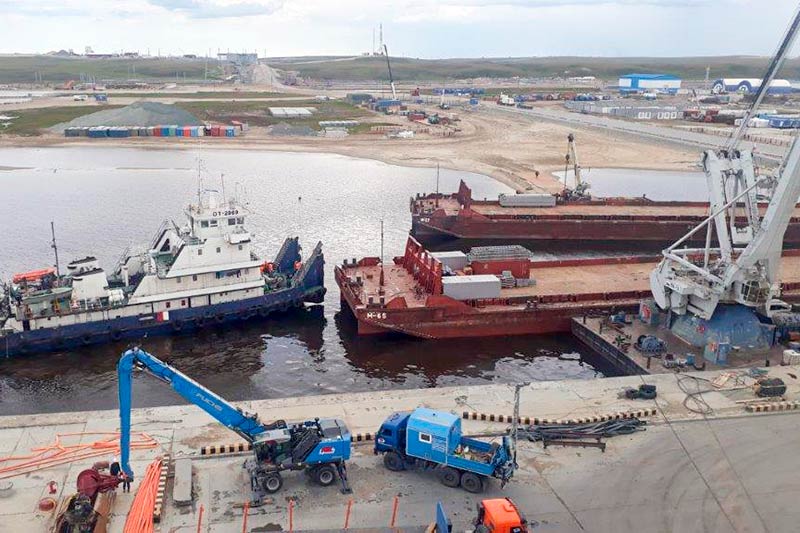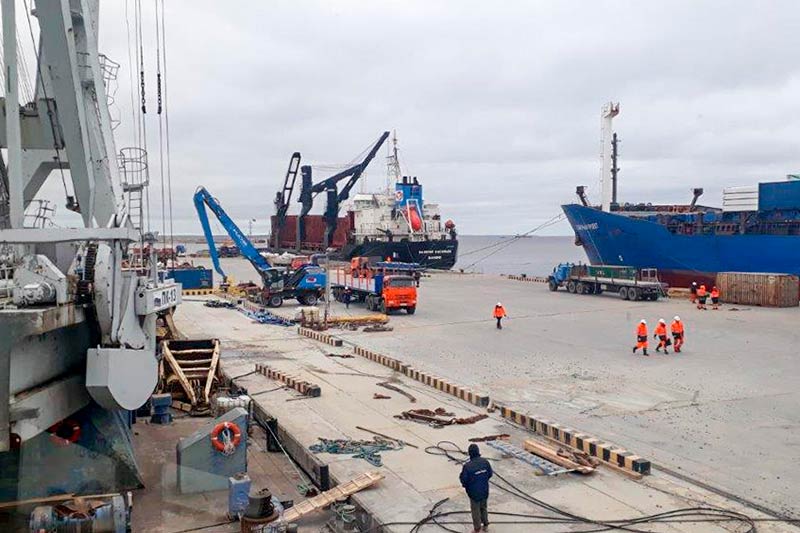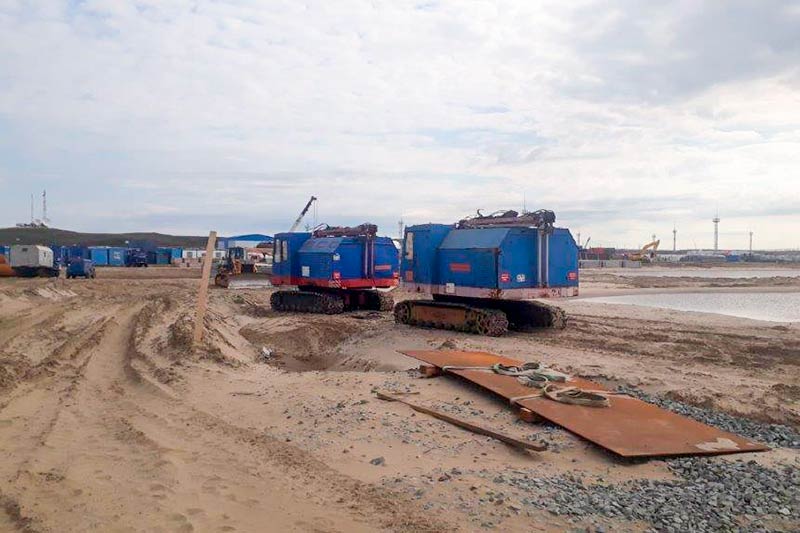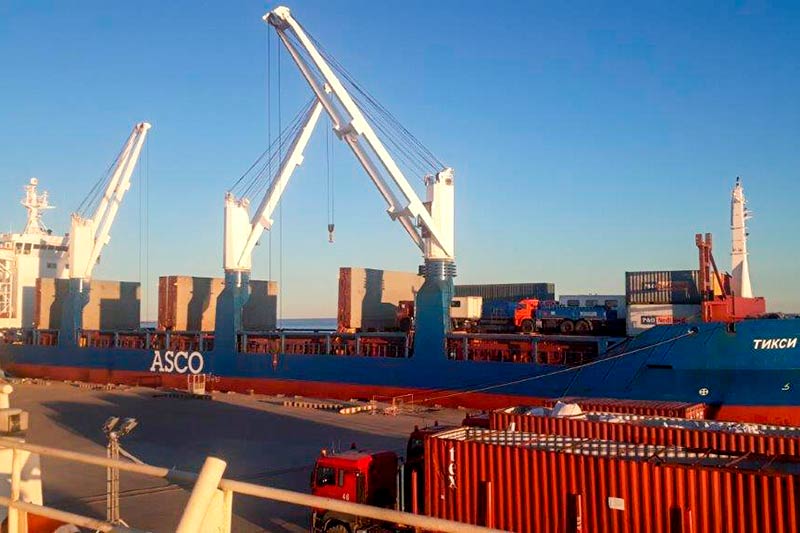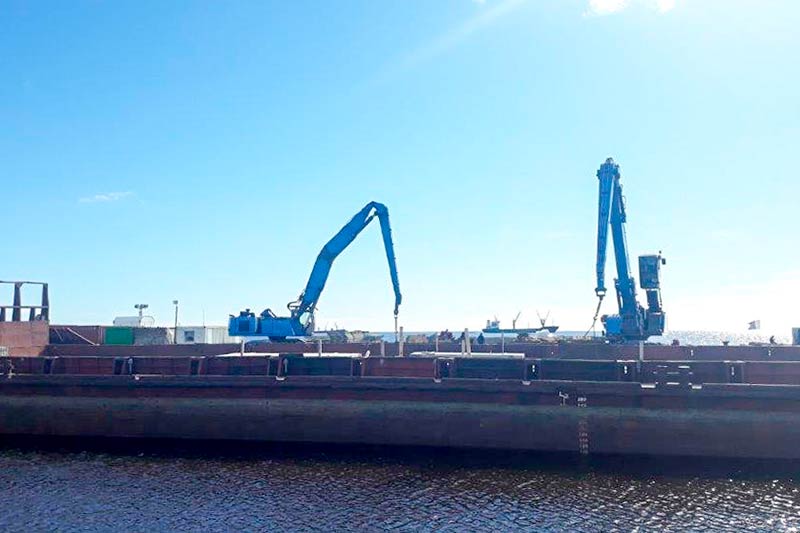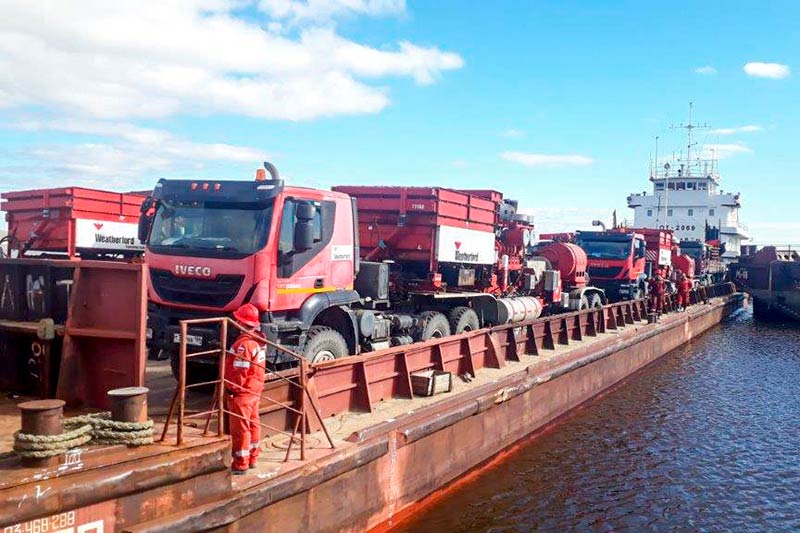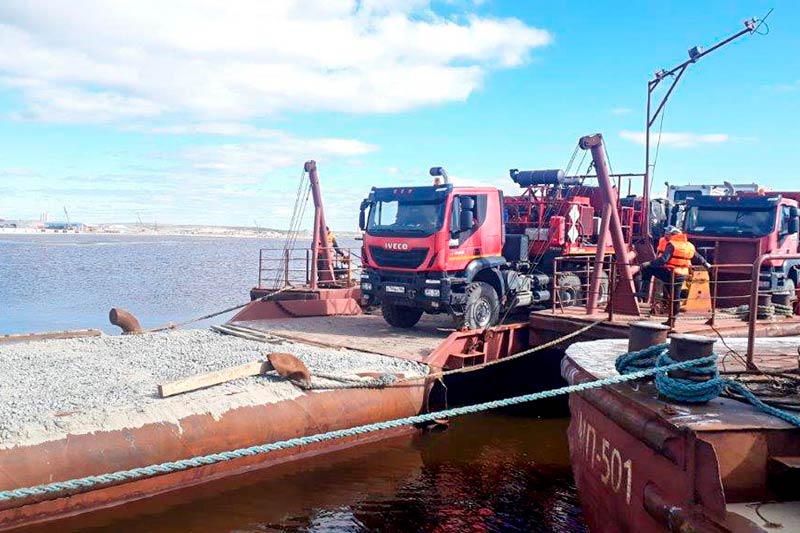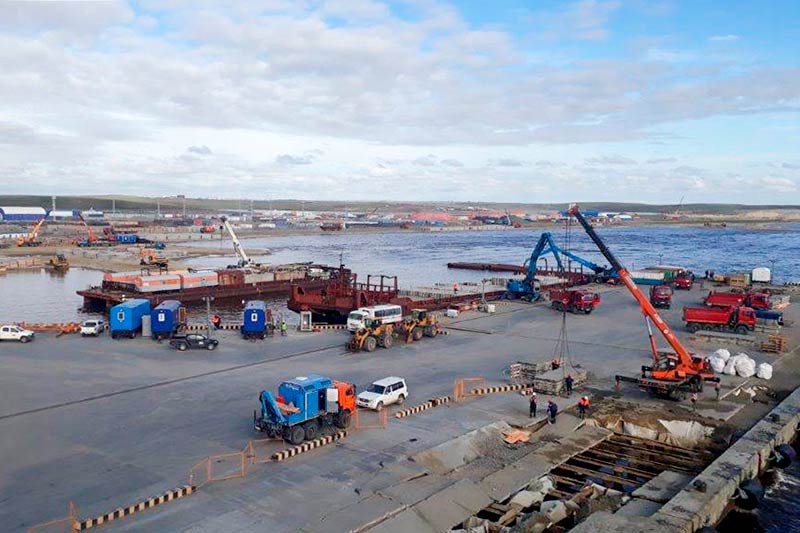Our task is to organize the handling of general and inert cargo totaling 350 thousand tons. Moreover, due to repairs at the berth, some sea vessels are forced to pause at anchorage on auxiliary floating facilities (small pontoons with a lifting capacity of 40 tons), and the cargo from these pauses is also unloaded onto the berth by our own efforts.
On July 3, 2020, the first barges carrying various general cargo (parts of drilling rigs and crew supplies), reinforced concrete slabs for roads and the airport, and various equipment were delivered to the berth. Our task is to organize the handling of general and inert cargo totaling 350 thousand tons. Moreover, due to berth repairs, some sea vessels must wait at anchorage on auxiliary floating facilities (small pontoons with a lifting capacity of 40 tons), and the pause cargo is also unloaded onto the berth by our own forces. Barge-tug vessels (BTS) arrive fr om Sergino and Korotchaevo, wh ere the loading of the BTS is coordinated by Arkhangelsk staff members Denis Chakhin, Artem Chakhin, and Ilya Golovinov.
To accomplish this task, we employed our own three Fuchs MHL360 handlers, a Terex TR780 crane, and a leased floating crane. Cargo unloaded from sea vessels and BTS is transported and offloaded onto the field’s rear areas using our own equipment. More than 20 units of our own cargo transport, crane, and auxiliary machinery are engaged in the navigation.
For unloading road vehicles from barges, we independently constructed a Ro-Ro berth allowing vehicles to drive off under their own power via a ramp on the barge. The berth requires constant repairs using a bulldozer and excavator, as the waves and periodic storms damage the foundation of the berth.
The camp is nearly 100% occupied, and by mid-August, there will be 140 of our employees simultaneously present on site.

